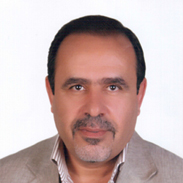Articles > > The New Syria: Dynamics of Compromise and Cooptation
Articles - Others - Date: 2025-04-29
Since December 8, Syria’s new administration has faced one of the most aggressive campaigns of coercion and extortion in its modern history. This effort has unfolded across multiple fronts, with a range of goals. While the administration is doing its best to maneuver, it’s increasingly clear that the campaign is starting to bear fruit, and the regime’s public statements are raising suspicion and doubts.
At the forefront of this campaign are both Arab and Western actors—chief among them, Israel, which is deploying its most brazen and violent tools: seizing land, carrying out hundreds of airstrikes, establishing de facto security zones, and claiming to protect minorities, all while maintaining a standing threat of escalation aimed squarely at Damascus and the Syrian People’s Palace.
Despite their differences, these actors share three core objectives: opposing political Islam in all its diverse forms, eliminating Iranian and Hezbollah presence in Syria, and ensuring Israel’s security. Beyond these, their interests diverge: Europe, for example, is focused on expelling Russian forces, while many Arab actors prefer they remain. Israel also favors Russian presence and is acting as a mediator to maintain it —something Washington tolerates without formally endorsing.
Israel has no interest in seeing a Sunni-Ottoman arc led by Turkey replace the Shia Crescent once led by Iran, and is in a race against time to curb Turkish expansion in Syria and the broader region. Arab states also oppose Turkish dominance, but prefer cooperation to confrontation. The Trump administration, on the other hand, has been willing to allow Turkey a leadership role in Syria, provided it respects Kurdish red lines and what Trump calls Israel’s “reasonable conditions.”
Among the most effective tools in this campaign is the use of economic sanctions, particularly the American Caesar Act. Under the Assad regime, this tool proved its worth, and today it demonstrates its ability to push the new Sharia government to conform to foreign demands. Washington has come to realize that vague promises of “aid,” “early recovery,” and “reconstruction” can be more persuasive than action on the ground.
The strategy has already been tested elsewhere: what the IDF, armed with the latest U.S. weaponry, could not achieve militarily in Gaza or Lebanon is now being extracted from resistance movements with the carrot of recovery aid. These promises have become the new “weapons of mass destruction” in the American arsenal—driven by an insatiable hunger for control and domination.
But sanctions are not the only tool in play. Syria’s complex ethnic and sectarian fabric—from Druze in the south to Kurds in the north—can also be weaponized. Israel was the first to capitalize on this and will certainly not be the last. As a result, Syrian unity, both societal and territorial, is under threat. If outright partition fails, power-sharing may follow. If that collapses, partition may return as a fallback. Like its predecessor, the new regime must navigate a perilous tightrope. One misstep, and the door swings open to the agendas of those lying in wait—an experience Syrians are all too familiar with.
The Signs of Compliance
The forces reshaping Syria are beginning to see tangible results. Several signs are already apparent, with more likely on the horizon. Damascus is increasingly sending signals of reassurance to the West, Israel, and major Arab capitals, emphasizing that it poses no threat to its neighbours —especially to Israel. This comes even as Israel steps up its territorial expansion, from Mount Hermon to the Yarmouk Basin and the outskirts of Damascus, not to mention the occupied Golan Heights, while routinely violating Syria’s air and sea space with impunity. The new regime’s responses are even weaker than those of its predecessor—responses that were once mocked by the very voices now aligned with today’s government. Today, tepid condemnations and silence have become standard practice, with no accompanying diplomatic, political, or legal action. This is not a call for military retaliation, nor is one expected—out of pragmatism, not principle. These are the limits of Syrian reactions, despite growing public outrage and opposition to the Israeli aggression against Syrian integrity, particularly in the south.
Syria also appears ready to join the Abraham Accords, eyeing normalization with Israel and appeasing the deal’s main backers, including the Trump administration. One “Abrahamic capital” is reportedly mediating between Damascus, Tel Aviv, and Washington—since lifting Caesar Act sanctions will ultimately require Israel’s approval. Some reports even suggest that dissolving Ahmad al-Awda’s 8th Brigade and integrating it into the new Syrian army may serve as an early down payment toward normalization.
President Ahmad al-Sharaa has extended warm overtures to Palestinian President Mahmoud Abbas and the Palestinian Authority at a time of utter disrepute, marked by their passive stances towards the occupation, resistance, and Gaza—while deliberately avoiding similar engagement with Hamas, citing various excuses. Meanwhile, the transitional government has formed a committee to monitor Palestinian factions, dismantled their camps, confiscated weapons (aside from small arms used to protect offices and key leaders), and arrested two Islamic Jihad leaders—all in service of preventing Iran’s return and punishing its affiliates.
The regime has been enthusiastic—even proactive—in offering guarantees to prevent Iran’s return to Syria and cut Hezbollah’s supply lines. This continues a political and ideological trend rooted in the Syrian conflict, aimed at winning over Tehran’s enemies. It is equally eager to distance itself from the Muslim Brotherhood, which—despite not maintaining special relations with Iran or Hezbollah—does not openly antagonize them either. The regime’s refusal to reopenSyrian Brotherhood offices and its efforts to disarm its members, even as other factions retain their weapons, reflect this alignment.
This is part of a broader Arab consensus opposing the Brotherhood, particularly since it is seen as Hamas’s ideological incubator. It seems that al-Sharaa and his allies seek to distinguish their brand of “non-jihadist Salafism” from the Brotherhood school. In this framework, the old Cold War-era mobilization of Salafis against communism is being repurposed—now targeting the so-called “Shia threat.” This same logic has allowed cooperation with Yemeni Salafis against both their Brotherhood and Houthi rivals.
Within this broader project of adaptation and co-optation, the issue of Syrian Jews has also resurfaced, with the regime offering them rights of return and property visitation. While such a position would be commendable from a state committed to equal citizenship and neutrality, coming from this regime, with its past and present record, it borders on farce. Instead, these moves read as desperate bids for Western and Israeli favor. We will refrain from repeating others’ comparisons between the new regime’s stance toward Syria’s Jews and its approach to Palestinian refugees—but that issue remains unresolved, whether concerning the situation of Palestinian refugees and their camps inside Syria, or the broader regional questions of Palestinian refugees’ right of return and self-determination.
Early signs suggest that the new regime wants to show it's not merely a puppet of Ankara and Erdoğan. But everyone knows that the current Syrian government, HTS, and the "Idlib Emirate" were Turkish creations. Without Ankara’s protection, Abu Muhammad al-Jolani wouldn’t be sitting in the People’s Palace as President Ahmad al-Sharra. Yet some Arab, Western, and especially Israeli circles are alarmed by Turkey’s expansion, so some symbolic gestures may be necessary. The recent move to treat Turkish airlines reciprocally in Syrian airspace is just the beginning. In Salafi and jihadist history, there are many stories of sudden reversals and shifting alliances, replacing old allies with new ones, and even and even turning hostile to former allies when necessary.
In post-transition Syria, the term "takwee‘" (literally "pivoting") has become popular—used to mock former regime loyalists who suddenly changed sides. But what those who coined and popularized the term forget is that the leadership itself is the most prominent and dramatic of all “pivoters,” flipping on past allies, turning over its leadership, and altering its rhetoric and lifestyle with astonishing speed.
False Promises and Bitter Truths
Despite its overtures, Israel remains distrustful of the new regime—even as it extends an Abrahamic hand—and continues to deny the significance of its transformations. Washington, for its part, maintains a “list of conditions” that, if accepted, would render Syria a satellite of its regional hegemonic project. The European Union is primarily interested in rebuilding law enforcement structures capable of securing borders with Lebanon and Iraq, curbing migration, and combating smuggling. Meanwhile, Arab states still adhere to a “step-for-step” approach—recycled from their dealings with the old regime, albeit with updates tailored to new priorities. Syria’s path out of the web of international sanctions and Israeli encroachment remains long, and any hope for swift relief is an illusion.
It would be prudent for the leadership to establish a team tasked with studying the long-term consequences of the empty promises Washington and its allies so freely offer to those they hope to pull into their orbit. There are many lessons to be drawn from others who have traveled far down the road of adaptation, accommodation, and submission. I hope that Ahmad al-Sharaa had the opportunity to ask President Abbas how he has now become a man cut off: no land reclaimed, no rights restored, no peace secured, despite offering the occupation generous concessions—sometimes under pressure, sometimes willingly. There is also much to reflect on in the legacy of normalization and the Abraham Accords, particularly what they have (and have not) delivered to the countries that embraced them—let alone to Palestine and the Palestinians.
Even if ideological fluctuation is inevitable, it would be preferable if al-Sharaa took a page from the Turkish model of political Islam—however unpalatable that may be to Arab and Syrian nationalists and leftists. What is currently on offer is not a democratic civil state, as once imagined. Damascus is not being readied to become Hanoi, and Quneitra will not be Saigon—not under this new order. Instead, Syria risks becoming a strange hybrid: a local Salafi regime aligned with the worst of Western and Arab normalization agendas. If so, the outcome will be meager—“less than a chickpea,” as the saying goes.
No one wants to see a civil Syria—let alone a democratic one. Not the Arabs, not the West, and certainly not Israel. Nor does anyone want a Syria with an “Islamic resistance” brand, whether Sunni or Shia. Civil rights, women’s rights, and minority protections are wielded less as genuine commitments than as instruments to pressure the regime, delay its progress, and extract concessions—chiefly, to sand down the sharp edges of its past positions and policies, and to block its reintegration into normal relations with Arab and non-Arab neighbors alike. The goal is to leave Syria stripped of all power and leverage, reduced to a tattered banner in the hands of the Western-Zionist alliance, blown wherever its winds may take it.




